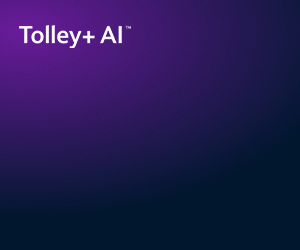All that Glitters
A section 741 clearance can be fool's gold warns Barry McCutcheon FTII, BA, LLM, barrister.
Clearances under section 741, Taxes Act 1988 have traditionally been thought of as rare and valuable as gold dust. While in many cases this may still be true, in two cases involving offshore trusts such clearances may resemble not so much gold dust as fool's gold.
All that Glitters
A section 741 clearance can be fool's gold warns Barry McCutcheon FTII, BA, LLM, barrister.
Clearances under section 741, Taxes Act 1988 have traditionally been thought of as rare and valuable as gold dust. While in many cases this may still be true, in two cases involving offshore trusts such clearances may resemble not so much gold dust as fool's gold.
As readers will recall, section 741 provides a clearance mechanism from the transfer of assets abroad provisions (sections 739 and 740), so that those provisions will not apply if the relevant transfer either had no tax avoidance purpose or satisfies a bona fide commercial test.
The deemed interest surcharge
The first of my two cases is where an offshore trust has both relevant income for the purposes of section 740, Taxes Act 1988 and stockpiled gains for the purposes of section 87, Taxation of Chargeable Gains Act 1992.
In such a case, it will often be preferable for benefits conferred on beneficiaries to attract a charge to income tax under section 740 rather than a charge to capital gains tax by reason of a gain attribution under section 87, Taxation of Chargeable Gains Act 1992. This is because the charge to capital gains tax on such an attribution may be supplemented by a deemed interest surcharge under section 91 of that Act producing a tax rate of as high as 64 per cent. Here a section 741 clearance can be positively disadvantageous. (This would not be the case, of course, if the gains attributed under section 87 were within the beneficiary's annual capital gains tax exemption.)
Offshore income gains
The second case concerns offshore income gains arising on the disposal of interests in non-qualifying offshore funds. The danger here is not that a section 741 clearance will be positively disadvantageous, but rather that it may engender a false sense of security.
It is, of course, perfectly true that a section 741 clearance will be effective to prevent offshore income gains arising in a non-resident trust from being brought into charge to income tax under section 739 or section 740. This follows from the fact that offshore income gains accruing to non-resident trustees are dealt with under subsections (2) and (5) of section 762, Taxes Act 1988. Neither of these subsections is an independent charging section.
Rather:
(a) Sections 761(3) and 762(4), Taxes Act 1988 adapt sections 2 and 87, Taxation of Chargeable Gains Act 1992 to bring into charge offshore income gains, and
(b) section 762(5) converts offshore income gains into income to which sections 739 and 740 apply.
A valid section 741 defence will therefore suffice to prevent any assessment under sections 739 or 740.
This however, may at best be cold comfort, because section 741 will be relevant only if the offshore income gain is assessable under section 740, and this is unlikely to be the case. This follows from the fact that the offshore income gain will fall first to be attributed under the section 87 attribution rules (capital gains of offshore trusts) pursuant to section 762(2). This in itself will prevent an attribution under section 740; see section 762(6) which states that, to the extent that an offshore income gain is treated as accruing to a United Kingdom resident under either section 762(1) or section 762(2), the gain is not to be treated as section 739 or 740 income. The result is that the offshore income gain will still be capable of being brought within the tax net notwithstanding the existence of the clearance.
Note in this connection that an attribution under the capital gains tax rules will not of itself cause section 740 to apply. This follows from the fact that where an offshore income gain is attributed to a beneficiary under the offshore trust provisions of section 87(4), Taxation of Chargeable Gains Act 1992, as modified by section 762(2)(a), Taxes Act 1988, that gain is brought into charge to income tax under section 2(1), Taxation of Chargeable Gains Act 1992 (which is modified for this purpose to give rise to an income tax charge in place of a capital gains tax charge). The gain is not charged under section 740 (which is relevant only for the purpose of attributing the gain).
Conclusion
Second 741 clearances have always been the devil to get. The irony is that they may now in certain circumstances be at best of no avail and at worst positively counter-productive. As the saying goes, all that glitters









